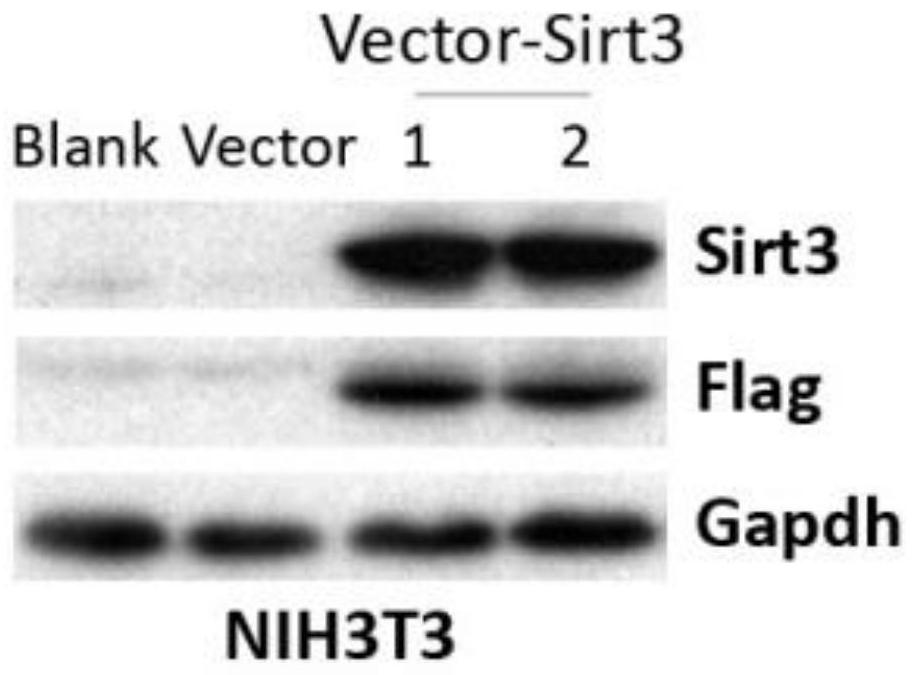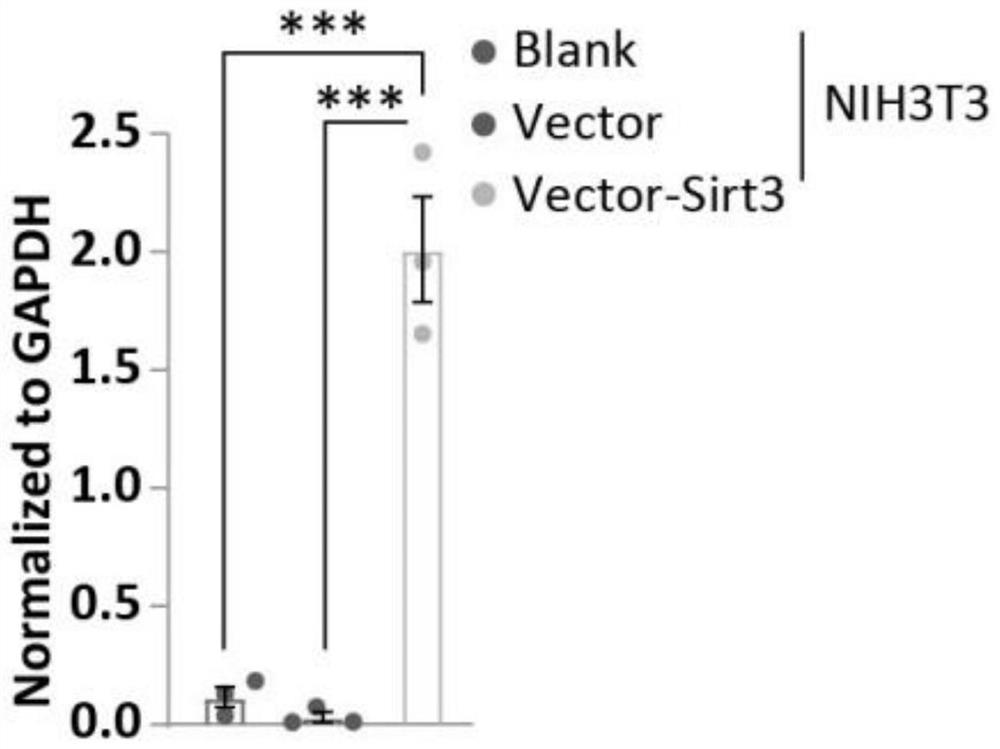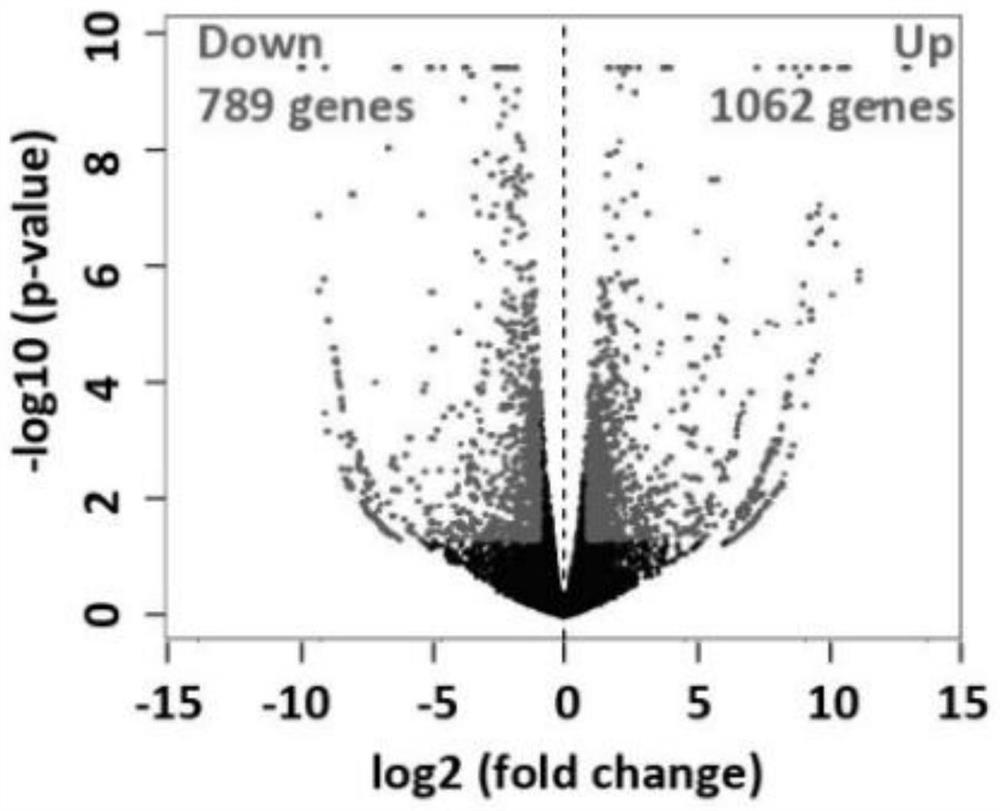Application of autophagy-deacetylase SIRT3 regulation axis in blood anti-aging
A technology of deacetylase and regulating axis, applied in the field of biomedicine, can solve problems such as adverse reactions of blood transfusion, toxic and side effects of pretreatment schemes, cell damage, etc., and achieve the effects of improving treatment effects, reducing potential risks, and delaying blood aging
- Summary
- Abstract
- Description
- Claims
- Application Information
AI Technical Summary
Problems solved by technology
Method used
Image
Examples
Embodiment 1
[0070] First, the inventors of the present invention established a non-human animal model (Atg7 f / f ; vav-iCre), and the relationship between the loss of autophagy and the expression level of SIRT3 in non-human animal hematopoietic cells was studied.
[0071] see Figures 2a-2g as shown, Figure 2a means atg7 f / f ; Transcriptome sequencing volcano in vav-iCre hematopoietic stem progenitor cells; Figure 2b means atg7 f / f ;Expression of SIRT family in vav-iCre hematopoietic stem progenitor cells; Figure 2c Indicates Q-PCR detection of atg7 f / f ; SIRT family mRNA expression in vav-iCre hematopoietic stem progenitor cells; Figure 2d Indicates Q-PCR detection of atg7 f / f ; Pre-mRNA expression of SIRT in vav-iCre hematopoietic stem progenitor cells; Figure 2e Indicates streaming detection atg7 f / f ; The protein level of SIRT3 in vav-iCre hematopoietic cells at all levels; Figure 2f Indicates Western blot detection of atg7 f / f ; vav-iCre single core and Lin - SIRT3...
Embodiment 2
[0078] Since the above experimental results suggest that there is indeed an autophagy-steamylase SIRT3 regulatory axis in hematopoietic stem and progenitor cells, the inventors of the present invention have further investigated the effect of high-expression autophagy-steacetylase SIRT3 regulatory axis on human aging hematopoietic cells. The effect on the level of autophagy was studied.
[0079] see Figures 3a-3d as shown, Figure 3a Indicates the correlation between age and red blood cells, lymphocytes and hemoglobin in 4250 cases of human peripheral blood samples; Figure 3b Indicates the autophagy-related gene transcription level of human bone marrow hematopoietic stem cells; Figure 3c Indicates the autophagy level of hematopoietic cells downstream of human bone marrow; Figure 3d Indicates the autophagy level of human bone marrow hematopoietic stem cells.
[0080] From Figures 3a-3d It can be seen that in aged hematopoietic stem cells, the expression level of autoph...
Embodiment 3
[0088] Since the above experimental results suggest that the highly expressed autophagy-steamylation enzyme SIRT3 regulatory axis can rescue the decline in the level of autophagy in human aging hematopoietic stem cells, so the inventors of the present invention have asked whether it is possible to seek a new method in aging non-human cells with impaired autophagy function. The feasibility of highly expressing the autophagy-steamylase SIRT3 regulatory axis in human animal hematopoietic stem cells was studied in depth.
[0089] A method for highly expressing the autophagy-steamylase SIRT3 regulatory axis in aging non-human animal hematopoietic stem cells with impaired autophagy, comprising the following steps:
[0090] Step 1) Obtaining the full-length fragment of mouse SIRT3 gene by molecular cloning method, and inserting it into a lentiviral vector;
[0091] Step 2) Transfect 293T cells with the lentiviral vector inserted into the full-length fragment of the mouse SIRT3 gene a...
PUM
 Login to View More
Login to View More Abstract
Description
Claims
Application Information
 Login to View More
Login to View More - R&D
- Intellectual Property
- Life Sciences
- Materials
- Tech Scout
- Unparalleled Data Quality
- Higher Quality Content
- 60% Fewer Hallucinations
Browse by: Latest US Patents, China's latest patents, Technical Efficacy Thesaurus, Application Domain, Technology Topic, Popular Technical Reports.
© 2025 PatSnap. All rights reserved.Legal|Privacy policy|Modern Slavery Act Transparency Statement|Sitemap|About US| Contact US: help@patsnap.com



